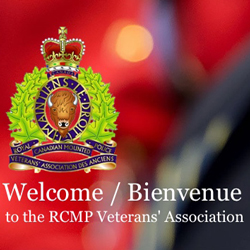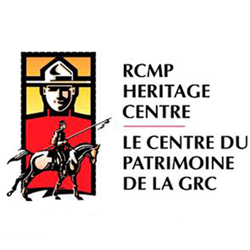Part 5 – “B” Squadron RNWMP
The activities of “B” Squadron RNWMP and their activities are provided below and includes of members who were there. The history of the Squadron is provided in this comprehensive historical account of the Squadron’s creation, deployment, activities, challenges and return to Canada, their story is being broken down into six parts:
Part 1 – How the Force Got Involved in Going to Siberia
Part 2 – From Recruitment to Embarking on SS Monteagle
Part 3 – On Route to Vladivostok Siberia and First Impressions
Part 4 – Activities in Siberia 1918 to 1919
Part 5 – Deployment and Off-Time In Siberia
Part 6 – Demobilization and Return to Canada
Part 5 – “B” Squadron RNWMP – Further Adventures in Siberia
For the majority of the “B” Squadron RNWMP members, they remained in Vladivostok from October 11, 1918 until their departure on June 5, 1919. However, a total of nine squadron members were deployed on two separate ‘Up Country’ expeditions to Omsk and Ekaterinburg.
This Part 5 article outlines these two expeditions along with the associated timelines of events occurring during the Russian Revolution.
Omsk – Capital for Counter-Revolutionaries
During the Imperial era, Omsk was the administrative center for the Western Siberia and the Steppes (Kazakhstan). Within the city boundaries, Omsk housed many notable buildings such as: the governor-general’s mansion (where Czar Nicholas II and family would live prior to being moved to Ekaterinburg where they were executed); many farm machinery plants; major Russian government offices; numerous large churches and catherdrals of various denominations; the Siberian Cadet Academy; British, Dutch and German consulates; administrative headquarters for the Siberian Cossack Army and one of the major railway stations on the Trans-Siberian Railway.
At the time, Omsk was considered a commercial hub for the region and was described as the “Chicago of Siberia.” Prior to 1918, the city had a permanent population of 113,700 people and was a major detention center for Russian political prisoners.
After the October 1917 Bolshevik coup, many refugees fled to Omsk fleeing the harsh and brutal violent of the Bolshevik’s ‘reign-of-terror.’ These refugees sought out every available space to provide them shelter and protections. In Omsk, thousands of refugees occupied 600 empty passenger rail cars and thousands of boxcars which choked the railway sidings and inhibiting the train traffic.
In the summer of 1918, a provisional government (White Russian) had been established and Omsk was selected as the ideal capital for this counter-revolutionary group. Omsk possessed a strategic location to coordinate strikes against the newly formed Bolshevik government.
In early November 1918, Admiral Aleksandr Kolchak arrived in Omsk and disembarked from his Trans-Siberian train from Vladivostok, with his small volunteer army contingent. He presented himself to the Socialist-Revolutionary Directory of the New White Russian government and was subsequently appointed as the Minister of War.
Shortly thereafter, British Colonel John Ward arrived with his 25th Battalion (Middlesex Regiment). The Battalion housed themselves in the Siberian Cadet Academy after displacing refugees from the facility. After establishing their military presense in Omsk, Colonel Ward was delegated the task to protect Admiral Kolchak as the British government had great plans for him.
It quickly became clear to Admiral Kolchak and Major General Alfred Knox (Head of the British Mission in Russia) that the White Russian government was dysfunctional and required changes to aggressively combat the increasing threat of the Bolsheviks.
General Knox was the British Military Attache in Petersburg when the Bolshevik coup took place and was familiar with many of the Bolshevik leaders. His ability to speak Russian made him a valuable source of information for the Allies.
It was Major General Knox who had convinced Admiral Kolchak to return to Russia and to take up the leadership role in the forthcoming battles with the Bolsheviks. In so doing, Kolchak was promised British and Allied support.
On November 16, 1918, a British sponsored a successful coup d’etat with the aid of a troop of Cossacks. At the of this undertaking, members of the 25th Battalion were deployed around key government buildings in Omsk and positioned machine guns in all the approaches to the center of the town.
General Knox pointed out to the White Russian government delegation that British would only continue to support their fight against the Bolsheviks if their government was led by Admiral Kolchak. On November 18, 1918, Admiral Kolchak was elected the head of the government with emergency powers and was named the “Supreme Ruler.”
With this shift in leadership, the British ramped up the importation of ammunition and supplies to support Admiral Kolchak. From November 1918 to October 1919, the British sent to Omsk – 97,000 tons of supplies which included 600,000 rifles, 6,871 machine guns and over 200,000 uniforms. Other Allied countries also contributed similar supplies to suppor the new Kolchak government. An apparent joke about the new New Siberian Army was – “uniform was British, boots were French, bayonets were Japanese and the ruler was from Omsk.”
Prior to November 11, 1918, the Allied plan was for Canada’s General George Elmsley to land the Canadian Siberian Expeditionary Force in Vladivostok and quickly advance to Omsk. Once there, he would take command of the Canadian and British troops to support the White Russian government’s fight against the Bolsheviks.
To supplement the Kolchak government, Allied troops had also landed at Anchangel (north of Moscow) and in the Caspian Sea area. With the three battle groups, it was British and French plan to have a three proned attack on the Bolsheviks. The map below illustrates the three British and French supported White Russian fronts against the Bolsheviks: General Denikin’s Army advances from the south; North White Army advancing from the South and Kolchak advancing from the east. Map also illustrates the geographical location of Ekaterinburg in comparison to Moscow and Omsk. Finally, the map also outlines the battle line with the Bolsheviks in May 1919 and later in October 1919.
To support the advancement of the Canadian troops to Omsk, General Elmsley ordered an Advance Party under the command of Colonel Thomas Morrisey. Morrisey’s Advance Party consisted of eight officers and forty-seven enlisted men. The purpose of this Advance Party was to assess, locate and secure suitable accommodations for the forthcoming Canadian Force and to provide administrative support for the British Middlesex and Hampshire Regiments. In addition, foraging and corral stations were to be setup at designated train stations along the route from Vladivostok to Omsk. These stations would be used to exercise the “B” Squadron RNWMP horses and restock with forage for the horses.
For this Advance Party, two squadron members were selected: Corporal William Ashworth and A/Corporal George Pavely.
On December 8, 1918, the Advanced Party accompanied Sir Charles Eliot (British High Commissioner for Russia) to Omsk onboard a Trans-Siberian Railway train heading east with a two month supply of provisions. Their train consisted of two locomotives at the front of the train and one at the rear with passenger and boxcars in between. To signify it was a British train, British flags were posted on both sides of a few boxcars.

For most of the Trans-Siberian Railway, it was a dual track system which provide one track for easterly and one for westerly train traffic. According to John Stewart, “the interior of the passenger cars consisted of wooden benches and were not comfortable for long journeys. Men were provided with straw filled mattresses and blankets to sleep on. The passenger and boxcar wheels were larger than Canadian trains and had spokes.” Each passenger car were heated by a cast iron coal burning heater.
The Advance Party arrived in Omsk on December 27, 1918 after travelling a distance of 3,417 miles. Upon disembarking, they were advised that tension was quite high int the city because of recent terrorist actions by the Bolsheviks. Apparently on December 22, 1918, the Bolsheviks initiated an uprising which resulted in several key Bolshevik leaders being released from the city prison. They then seized the Kulomsino rail station and the Koloklnikov Mill south of the city and blew up the bridge over the Irtysh River.
With the Bolshevik activities in and around Omsk, there was increased concern for the safety of the British troops and the Canadian Advance Party. However, this threat was minimized with the presences of a large number Czech Legion troops.
British and Czech Legion forced assisted the government troops by suppressing the revolt and arrested the key organizers. Twelve men involved in the jail break were quickly arrested and executed. The government troops captured two hundred other Bolsheviks and paraded them across the ice on the Irtysh River and were shot on masse. When all Bolshevik action was eventually surppressed – approximately a thousand people had been killed.
The local Kolchak authorities suggested that the Canadian Advance Party should occupy the Omsk theological school as it was a suitable accommodation to house the entire Canadian Forces members, equipment, horses and supplies. However, it was decided to postpone evicting refugees from the school until a decision had been made on whether the main body of the Canadian Forces were to advance to Omsk.
At the time, the Canadian government was receiving domestic pressure to have the Canadian troops returned as the General Armistice had been signed on November 11, 1918 and there was a decreasing interest in getting involved in the internal affairs of Russia. Therefore, General Elmsley was waiting to hear from Ottawa on a final decision on what the deployment action was to be undertaken by the Canadian Forces.
In one report to the Canadian government, General Elmsley outlined his concerns around the growing supply problems along the Trans-Siberian Railway and the increasing instability of the railway because of sabotage and labour strikes.
The delayed decision created friction between the Canadian Advance Party and the British forces in Omsk. Several attempts were made by British Colonel John Ward to get the Canadian Advanced Party involved in action west of Omsk. Upon hearing of these attempts, General Elmsley ordered Colonel Morrisey that no Canadian troops would advance outside of Omsk without his personal direction. The Advance Party was to remain in Omsk until further orders were received.
While waiting for orders, the members of the Advance Party toured the city and participated in a skating party. They found that the city contained many large buildings but lacked adequate sewage systems and there was a lack of food for the Russian people. The city was flooded with refugess who occupied all vacant shelters. The refugees consisted of only old people, women and young children. The military aged men had been conscripted into Bolsheviks or New White Russian Army or had been killed.
On March 12, 1919, General Elmsley finally received the long awaited decision from the Canadian Government. The decision was to evacuate all Canadian troops and have them return to Canada as soon as possible. A telegraph was sent to the Advance Party to make places for their evacuation back to Vladivostok.
Between March 28 and April 15, 1919, the Canadian Advance Party departed Omsk on available Trans-Siberian railway trains. Corporal William Ashworth returned to Vladivostok on March 26, 1919 and Constable George Pavely arrived on April 12, 1919.
Horses Transported to Ekaterinburg
In preparation for a Spring 1919 White Russian offensive against the Bolsheviks, Kolchak had initiated a massive conscription of new soldiers from the Siberian areas which his army occupied. He was so desparate for soldiers that he also conscripted captured Bolsheviks into his new White Russian Army. It was the hope of the British that this Spring 1919 offences would serve as a ‘death-blow’ to the Bolsheviks.
In Ekaterinburg, the British officers and soldiers were providing training for the 100,000 newly conscripted soldiers. The Canadian government agreed to provide a contribution by turning over the “B” Squadron horses and equipment to the Cossack cavalry units based at Ekaterinburg. The distance between Vladivostok and Ekaterinburg was 3,146 miles.
Captain Montagu Smith (British Royal Artillery), Officer Commanding the British Remounts Unit was to take command of the 154 Squadron horses and 14 mules on May 18, 1918 at Vladivostok. It was his responsibility to coordinate the transfer of the horses and equipment to Ekaterinburg. With a limited number of inexperienced Russian Cavalrymen to assist him, Captain Smith petitioned Major Worsley for members of the Squadron to assist with the loading and transportation of the animals. Based on this request, the following squadron members were delegated to assist Captain Smith:
- Farrier Sergeant Ted Margetts – Reg. #7373
- A/Corporal Philip Bossard – Reg. #7398
- A/Corporal Luther Clare – Reg. #7484
- Trooper Harry Nunnemaker – Reg. #7434
- Trooper George Pilkington – Reg. #7368
- Trooper Michel Wright – Reg. #7442
Sergeant Margett was to accompany the horses all the way to Ekaterinburg while the remaining squadron members were only to travel to Huarbin, Manchuria (distance of 316 miles from Vladivostok).
According to Trooper Randolph Holding – “The hardest part of this was when each man said good-bye to his horse. We couldn’t take them home with us. They had been donated as re-mounts for a White Russian troop in the Urals.”
Major George Worsley described the turning over of the squadron horses in his report to the Commissioner – “Our men were very sore at parting with their horses as they had been long with us and were a very fine lot.”
On May 17, 1918, Sergeant Margetts coordinated the loading of equipment, supplies and forage onto the twenty-one car train at the First River train station. On the following day, the horses were loaded – eight horses in each car. To assist with the transportation of the horses, Captain Smith received 56 Russian cavalrymen. In his diary, Sergeant Margett described these Russians as “appear to be good school boys and to have no idea of horse management.” At 6:25 PM, the train pulled out of the train station on its 30 day journey to Omsk and Ekaterinburg.
According to Captain Smith’s report to the Commissioner dated August 10, 1919 “I found that I could not possibly manage with the Russians they

According to Captain Smith’s report to the Commissioner dated August 10, 1919 “I found that I could not possibly manage with the Russians they gave me to look after the horses so I disobeyed all orders and as the 5 RNWMP volunteered to go all the way (to Ekaterinburg), I just carried on.” He soon realized that it was an extremely time consuming task in keeping the horses healthy for this long journey. Every 2 or 3 days, the horse train had to: stop the train, unload the 80 animals at a time, exercise them and load up them back on the train.
After a few days outside of Vladivostok, Sergeant Margetts and his men discovered the horses were suffering from colic and pneumonia. Oats were discovered to be wet and mouldy. To ensure the healthy condition of the horses, each horse stall was cleaned and inspected daily.
During the spring of 1919, travel along the Trans-Siberian Railway was a hazardous journey. There was a constant threat of being shot at by the Bolsheviks or the train being detrailed by the Bolskeviks. Allied troops and the Czech Legion patrolled the towns and train stations but the Bolskeviks roamed at will in the country side. The situation was similar to what had occurred in the America wild west with the wagon trains being attacked by the local hostiles. Consequently, the men on the train were on constant alert for potential danger.
At the Polovina train station on June 1, 1918, Margetts outlined that the Assistant Comptroller of the Railway by the name of Kalugin was most insolent to the Russian Officers and a British officer on their train. According to Sgt. Margetts, “this man (Kalugin) said that he would telegraph up the line to all stations to cause us as much trouble as possible. At the next station (Zamzor), the train master added 27 more boxcars to the rear of our train.” Their train consisted of the horse boxcars at the front, locomotive in the middle and passenger cars at the rear followed by the recently added boxcars. With the expectation of possible problems ahead, Margetts stated “on June 3, we left Nynirdinsk with 70 Czechoslovak soldiers and one machine gun.”
On June 4, 1918, the Bolsheviks were successful in derailing their train 5 miles out of Zamzor and about 1,450 miles east of Omsk. At the time of the derailment, most of the British, Canadians and Czechs were in cars at the rear of the train and the 56 of the young Russian cavalrymen were in the horse boxcars.
The derailment was caused by the Bolsheviks removing the railway spikes on both rails on a steep embankment near an iron bridge. According to Sgt. Margetts, “the train was travelling about 20 miles per hour and the guard on the engine didn’t see that anything was wrong.”
Prior to joining up with “B” Squadron RNWMP in August 1918, Sergeant Margetts had been in the 77th Battery of the Royal Field Artillery with the rank of sergeant major. His previous military service consisted of: 12 years in the artillery; 3 years in the South Africa Hussars and 3 years with the 22nd Light Horse.
So when the derailment took place, Sergeant Margetts quickly took charge of the situation and commenced delegating and deploying the Russians, Czechs and his fellow squadron members.
His immediate actions were to:
- coordinate men to retrieve the horses still trapped in the wreck boxcar;
- delegate Corporal Bossard and men to retrieve the 20 horses which had run off;
- arrange to stop the east bound train so the injured men would transported to the hospital back in Zamzor; and
- sent two Russians to Zamzor to advise the rail authorities not to send any further trains until the tracks could be cleared. In addition, he requested 19 replacement boxcars and that the Assistant Comptroller at Polovina should be arrested as a Bolshevik sympathizer.
Shortly after the derailment, a patrol of Czech Legion members arrived and were directed by Sergeant Margetts to pursuit the Bolsheviks who were taking rifle shots at the train from a nearby forest. He was later advised that the responsible Bolsheviks had been caught and hung by the Cossack patrol.
The train derailment resulted in: 2 dead Russian cavalrymen and 14 injured; 18 horses and 1 mule were killed with 13 horses badly injured; 19 boxcars were smashed and unusable and 26,000 pounds of forage lay spilled on the tracks.
Despite his severe injuries, Cpl. Bossard led two other squadron members to recover as many runaway horses as possible. They travelled a distance of 8 miles to recover two horses in the middle of Bolshevik held territory.
The Bolsheviks attempted to derail one of the relief trains from Zamzor but they were unsuccessful. That night, a steady rain fell with a cold wind which made life uncomfortable for the men and horses.
The following day, 19 requested boxcars arrived and it took most of the afternoon to load the horses and mules into the new boxcars as well as reloading the 26,000 pounds of forage and equipment. By 7:20 PM, their train resumed its westward passage to Omsk.
On June 6, 1919, they passed 11 wrecked trains which has also been derailed by the Bolsheviks.
On June 11, 1919, the train pulled into Bonvonikolsevsk at 2:15 PM and a short time thereafter – General Alfred Knox came to inspect the train and received an update on the derailment. Sgt. Margetts was able to take a photograph of General Knox on this visit.
On June 12, 1919, the train arrived in Omsk and the horses were unloaded and exercised. Five days later, the train arrived at Ekaterinburg. On June 25, 1919, Captain Smith turned over the squadron horses at the Russian Cossack stables at Ekaterinburg.
According to Trooper Pilkington “the horses looked very poor, as we will naturally be admitted, they having spent thirty days in the boxcars.”
While in Ekaterinburg, Sergeant Margetts had the opportunity to visit the basement where Czar Nicholas II and his family were executed by the Bolsheviks. Upon returning back to Vladivostok, he reported his observations to Headquarters in Vladivostok.
In late June 1919, the New White Russian Army advanced on the Bolsheviks with no reserve soldiers. With the intital battle, thousands of conscripted soldiers retreated leaving a weaken flank which the Bolsheviks exploited this advantage to outflank the New Russian Army. With the failed advancement, hundreds of conscripted soldiers deserted their army units and many joined the ranks of the Bolsheviks. One of the Bolshevik Commanders telegraphed General Knox and thanked him for clothing his new soldiers and providing them with British rifles and ammunition. Tthe New White Russian Army could not provide a counter-attack and the Bolsheviks continued to increase their army’s numerical superiority . Kolchak’s government could not recover from this situation and was eventually be pushed back to Omsk.
On July 2, 1919, the squadron members were ordered to evacuate Ekaterinburg and boarded a new train bound for Vladivostok. The Bolsheviks overran and captured Ekaterinburg on July 16, 1919 and Omsk fell to the Bolsheviks on November 14, 1919.
The squadron members arrived in Vladivostok about midnight on July 16, 1919 and slept in their boxcar. Corporal Bossard was taken to the hospital where he would remain there until November 19, 1919.
On August 2, 1919, the remaining squadron members boarded the ship “Perza” which would take them to Japan and from there they boarded the “Empress of Japan” on August 16. They arrived in Vancouver on August 27 and caught a train putting them back in Regina on August 30, 1919.
In all likelihood, the “B” Squadron horses became mounts for Leo Trotsky’s new Red Army.
In his letter to the Commissioner on August 10, 1919, Captain Smith outlined the performance of squadron members assigned to him as – “I could not wish for a finer lot of men.”
Based on the actions of Sergeant Margetts and Corporal Bossard, Captain Smith made a recommendation that they both receive a medal for taking the appropriate and decisive action on July 4, 1919. His recommendations were supported.
On 19 October 1919, Sgt. Margetts was awarded the Meritorious Service Medal for “causing the rescue work with Russian guards. By his example and energy, many valuable horses were saved to the government.”

Photograph of Corporal Bossard’s medals: Military Medal, British World War I medal and World War I Victory Medal (Source of photo – Mike McMahon)
Check out – Part 6 – “B” Squadron – Demobilization and Evacuation to Canada


 March 31, 2012
March 31, 2012 
























